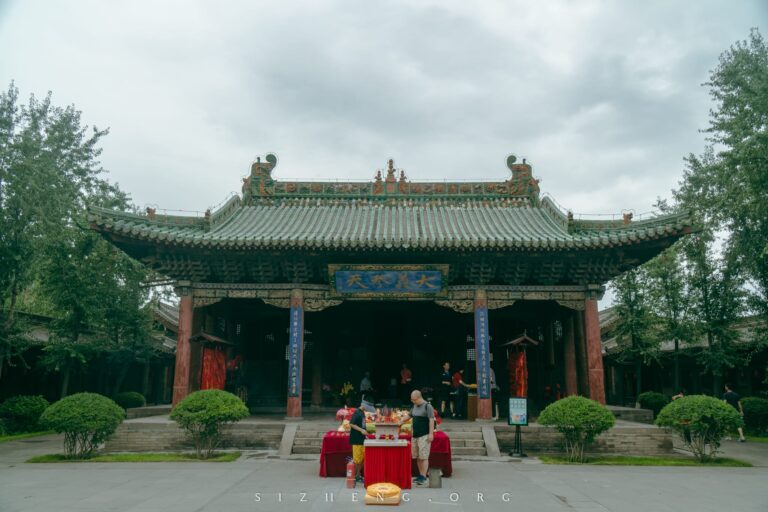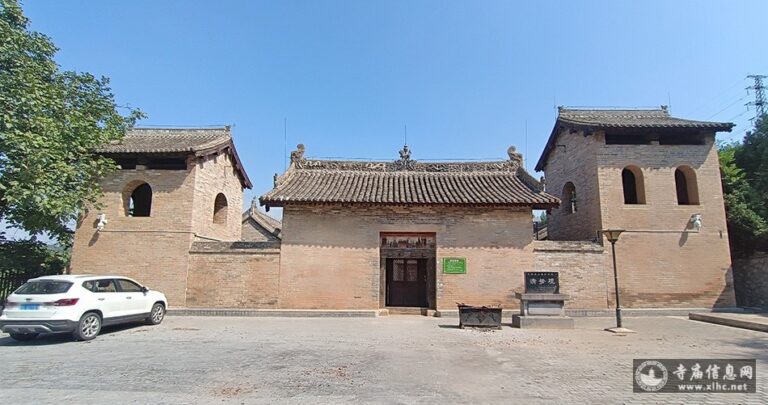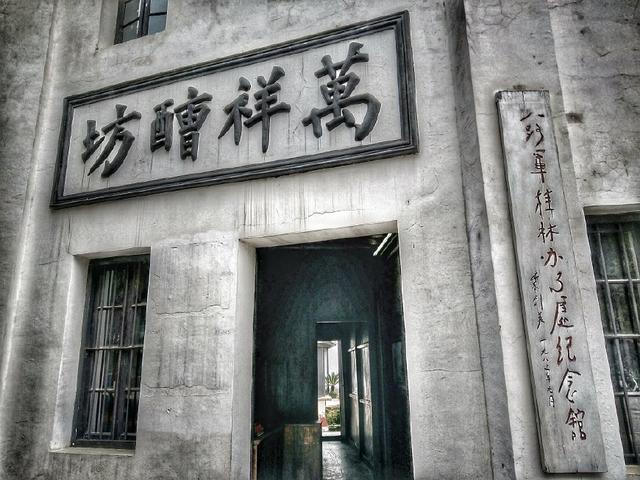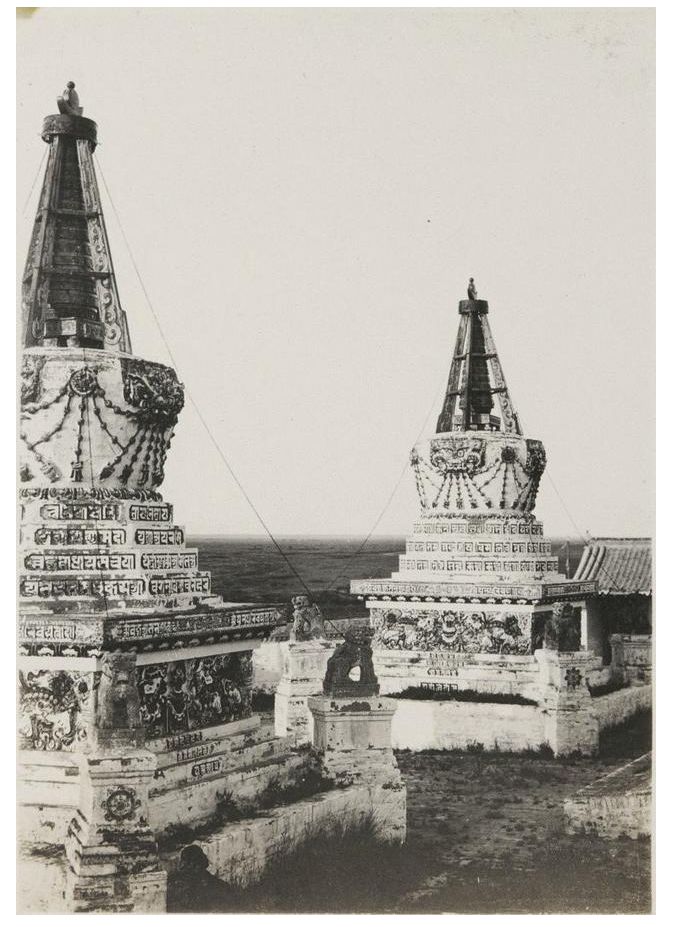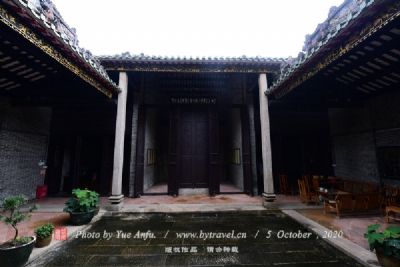Chengdu Qiongyao Yizhi: Where Tradition Meets Modern Taste in Sichuan Cuisine
An Essential Guide to Visiting Chengdu Qiongyao Yizhi
In This Guide
- An Essential Guide to Visiting Chengdu Qiongyao Yizhi
- The Rich History of Chengdu Qiongyao Yizhi
- Main Highlights: What to See at Chengdu Qiongyao Yizhi
- Planning Your Visit: A Practical Guide
- Tickets, Hours, and Booking
- How to Get There
- Local Cuisine and Accommodation
- Frequently Asked Questions
- Final Thoughts on Your Trip
Nestled in the picturesque landscape of Qionglai, just outside the bustling city of Chengdu, lies the remarkable Chengdu Qiongyao Yizhi, a testament to the rich ceramic heritage of ancient China. This archaeological site, recognized as one of the largest and most significant ancient porcelain kilns in the southwestern region, offers a fascinating glimpse into a vibrant era of pottery production that spanned over eight centuries, from the Southern Dynasties to the Song Dynasty.
The Qiongyao kilns, particularly renowned for their exquisite celadon glazes and intricate designs, were once at the heart of an industry that supplied fine ceramics not just to local markets but also to distant lands. Today, the site encompasses several ancient kiln ruins, including the celebrated Shifang Hall and the Guyi Wayaoshan kilns, where archaeologists have unearthed thousands of artifacts, shedding light on the craftsmanship and daily lives of the people who inhabited this region.
Visitors to the Chengdu Qiongyao Yizhi are invited to explore its expansive archaeological park, which features preserved kiln sites, interactive exhibits, and workshops that allow guests to engage with the ancient art of pottery-making. Here, you can witness the legacy of traditional techniques merged with modern creativity, making it an ideal destination for both history enthusiasts and those seeking a hands-on cultural experience.
As you stroll through the lush surroundings, with the serene sounds of flowing water and the vibrant colors of blooming flowers, you’ll not only uncover the secrets of ancient artisans but also appreciate how this historical site thrives in contemporary society, fostering a renewed appreciation for the art of ceramics. Whether you are a traveler looking for unique experiences or a history buff eager to delve into the past, the Chengdu Qiongyao Yizhi promises an unforgettable journey through time.
The Rich History of Chengdu Qiongyao Yizhi
The Chengdu Qiongyao Yizhi, or Qiongyao archaeological site, is a remarkable testament to the rich ceramic history of southwestern China. This ancient kiln site, located in Qionglai City, Sichuan Province, has a history that spans over eight centuries, beginning in the Southern Dynasties and flourishing through the Tang and Song dynasties.
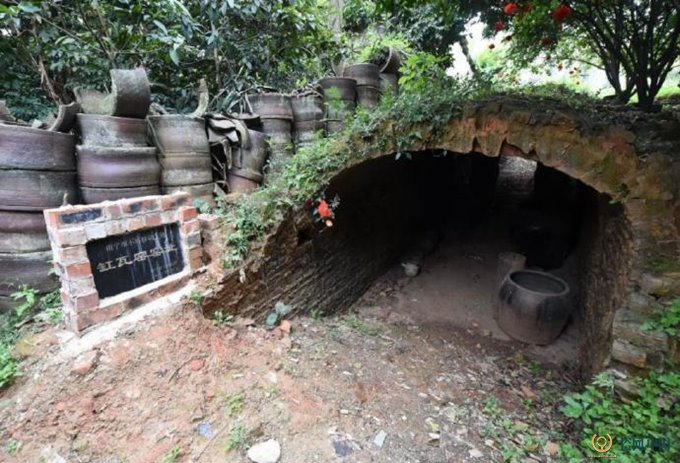
Chengdu Qiongyao Yizhi.
Qiongyao is celebrated as one of the oldest and most significant ceramic production centers in China. It is particularly renowned for its high-quality celadon wares, which gained prominence during the late Tang to Five Dynasties period. The site comprises several interconnected kiln ruins, including the famous Shifangtang, the Gu Yi Wa Yao Mountain, and others, contributing to its status as a major center of ceramic art.
Archaeological excavations began in the 1980s, revealing a treasure trove of artifacts. The most significant among these discoveries was made at the Shifangtang site, where archaeologists unearthed over 10,000 pottery pieces, showcasing a diverse range of forms, styles, and functions. These artifacts included everyday utensils, decorative items, and even religious artifacts, reflecting the vibrant culture and daily life of the people during that era.
The kilns themselves are notable for their advanced design and production techniques. Among the most impressive structures is the sloped dragon kiln, which stretches an impressive 42 meters and represents the most complete example of its kind discovered to date. This kiln design allowed for efficient heat distribution and maximized production capacity, essential for the mass production of ceramics.

Chengdu Qiongyao Yizhi.
Qiongyao’s influence extends beyond its physical artifacts; it played a crucial role in the development of ceramic technology in China. Innovations such as the use of underglaze decoration and the introduction of vibrant color glazes marked significant advancements in ceramic manufacturing. The site is renowned for its colorful wares, including the striking Qiong three-color pottery, which featured a unique combination of yellow, brown, and green glazes.
As the history of Qiongyao unfolded, it became a melting pot of cultural influences, merging techniques from both northern and southern China. This cross-pollination of artistic styles and methods contributed to the evolution of Chinese ceramics, making Qiongyao an essential chapter in the narrative of this ancient art form.
Today, the Qiongyao site is preserved as a national archaeological park, offering visitors an immersive experience into the ancient world of Chinese ceramics. The park includes various educational and interactive facilities, allowing guests to engage with the techniques and traditions of pottery making that have thrived here for centuries. As such, Qiongyao not only serves as a window into the past but also as a living testament to the enduring legacy of Chinese ceramic artistry.
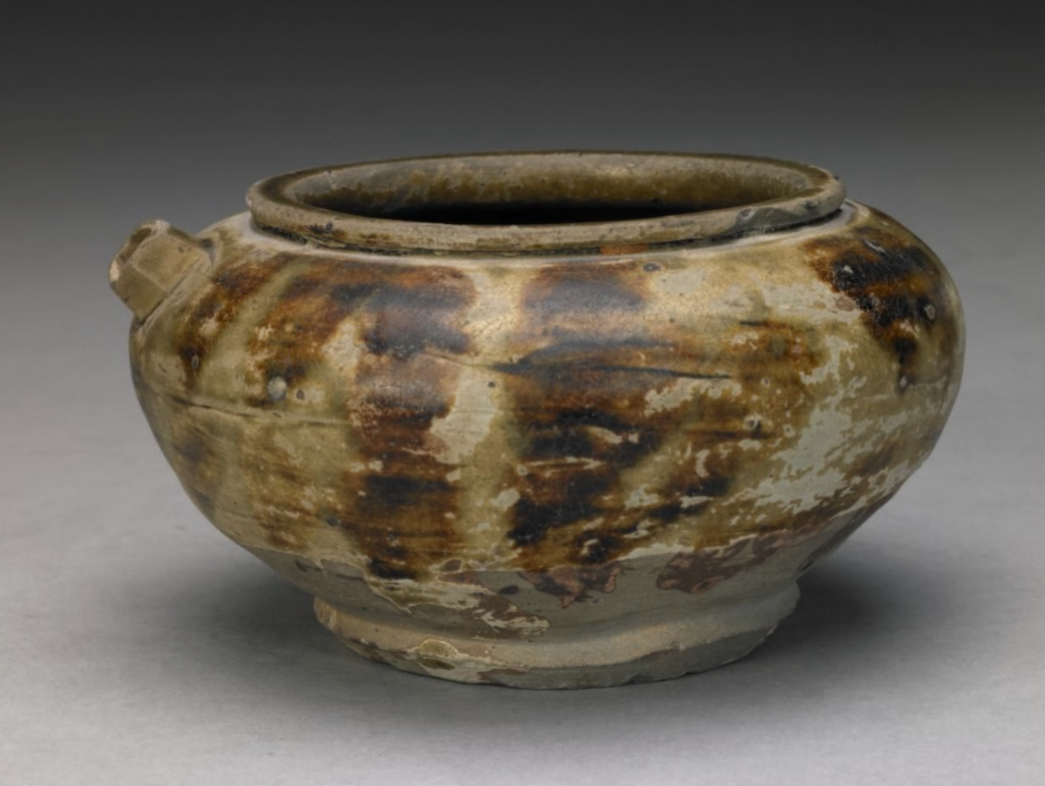
Chengdu Qiongyao Yizhi.
Main Highlights: What to See at Chengdu Qiongyao Yizhi
Chengdu Qiongyao Yizhi, nestled in the picturesque landscape of Sichuan province, offers a fascinating glimpse into the history of ancient Chinese pottery. This archaeological site, known for its rich legacy spanning over 800 years, represents one of the largest and most significant ancient kiln complexes in Southwest China.
Visitors to the Qiongyao site can explore the remains of 14 kilns, each a testament to the advanced ceramic techniques that flourished here from the Southern Dynasties through the Song Dynasty. Among these, the Shifang Hall and the Gu Yi Wa Yao Mountain kilns are particularly noteworthy, having yielded thousands of artifacts during excavations initiated in the 1980s. The sheer volume and variety of findings—including everyday utensils, decorative items, and tools—underscore the site’s historical importance and its role in the evolution of Chinese ceramics.
The centerpiece of the site is the well-preserved sloping dragon kiln, measuring 42 meters in length. This impressive structure not only highlights the ingenious design of ancient kilns but also serves as an educational exhibit for visitors to appreciate the intricacies of traditional pottery production. The dragon kiln’s construction employed a scientific approach to ensure even heating, which was crucial for achieving high-quality porcelain.
In addition to its historical significance, the Qiongyao Yizhi has been transformed into a vibrant archaeological park, featuring a visitor center, exhibition halls, and interactive workshops. Here, guests can engage with artisans practicing traditional techniques, participate in pottery-making sessions, and witness live demonstrations of ancient firing methods.

Chengdu Qiongyao Yizhi.
The museum showcases a stunning array of artifacts, including the famous Qionglai celadon and colorful three-color glazed pottery. These pieces reflect the artistic prowess of ancient potters and the fusion of various regional styles, making them a must-see for enthusiasts of Chinese art and culture.
Surrounded by lush landscapes and serene waterways, the Qiongyao site provides not just a journey into the past but also a tranquil escape from the bustle of city life. Whether you’re an avid historian or a casual traveler, the charm and cultural richness of Chengdu Qiongyao Yizhi promise an unforgettable experience.
Planning Your Visit: A Practical Guide
Visiting Chengdu’s Qiongyao Yizhi (邛窑遗址), a remarkable archaeological site known for its ancient ceramic production, offers a unique glimpse into China’s rich history of pottery. This practical guide will help you navigate your visit with essential information and tips.
Getting There
Location:
Qiongyao Yizhi is situated in Qionglai City, approximately 64 kilometers southwest of Chengdu. The main entrance is located at Qiongyao Avenue, Linqiong Town.
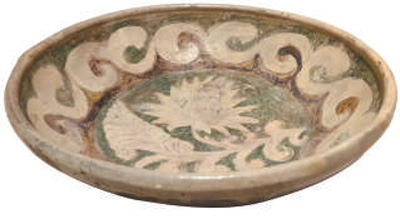
Chengdu Qiongyao Yizhi.
Transportation Options:
– By Car: Renting a car or booking a taxi is the most convenient way to reach the site. The drive takes about 1.5 hours from downtown Chengdu.
– By Public Transport: You can take a bus from Chengdu to Qionglai. Look for buses labeled for Qionglai at major bus stations. From Qionglai, local taxis or shuttle buses can take you to the site.
Opening Hours and Admission
Hours:
The Qiongyao Ruins Museum is typically open from 9:00 AM to 5:00 PM. However, it’s advisable to check for any seasonal changes or holiday hours before your visit.
Admission Fee:
Entry to the museum is free, which makes it an accessible destination for all travelers. Guided tours and educational sessions may incur additional charges, so consider this if you’re interested in a deeper understanding of the site.

Chengdu Qiongyao Yizhi.
What to Expect
Explore the Ruins:
The site features a vast area with 14 excavated kiln sites, showcasing the ancient techniques used in ceramic production. Key highlights include:
– Dragon Kiln: The most complete example of a sloping dragon kiln, measuring 42 meters long.
– Artifacts: Over 10,000 artifacts have been unearthed, including pottery shards, tools, and decorative items, offering insight into the daily lives of ancient potters.
Museum Exhibits:
The Qiongyao Ruins Museum hosts various exhibits detailing the history of the kilns, the types of pottery produced, and the technological advancements made over the centuries. Don’t miss the displays of celadon and multi-colored glazed pottery that reflect the artistic flair of the period.
Activities
If you’re looking to engage more deeply with the history of pottery, consider participating in:
– Workshops: Join pottery-making sessions led by local artisans. These hands-on experiences allow you to learn traditional techniques and create your own ceramic pieces.
– Guided Tours: Knowledgeable guides can provide context and stories behind the site, enhancing your understanding of its significance.
Nearby Attractions
After exploring Qiongyao Yizhi, consider visiting other local attractions:
– Wenjun’s Former Residence: A charming historical area that showcases local culture and architecture.
– Bamboo Sea Scenic Area: If time permits, explore this picturesque area filled with bamboo groves, perfect for hiking and photography.

Chengdu Qiongyao Yizhi.
Tips for Visiting
- Best Time to Visit: Spring (March to May) and autumn (September to November) are ideal, with pleasant weather and beautiful scenery.
- Footwear: Wear comfortable shoes, as you will be walking on uneven surfaces around the ruins.
- Photography: Capture the stunning landscape and intricate pottery details, but respect any restrictions on photography in specific areas.
- Stay Hydrated: Bring water, especially during warmer months, as there are limited facilities on-site.
Conclusion
A visit to Qiongyao Yizhi is not just an exploration of ancient ceramics but a journey through time into the heart of Sichuan’s cultural heritage. With its fascinating history, engaging activities, and beautiful surroundings, it promises an enriching experience for every traveler.
Tickets, Hours, and Booking
Visiting Chengdu Qiongyao Yizhi (邛窑遗址), located in Qionglai, offers a unique glimpse into ancient Chinese ceramic history. The site is home to the Qiongyao Ruins Museum, which showcases the rich heritage of one of the largest ancient ceramic kilns in southwestern China.
Ticket Information
-
Admission Fee: Entrance to the Qiongyao Ruins Museum is free of charge. This allows visitors to explore the historical artifacts and educational exhibits without a financial barrier.
-
Recommended Visit Duration: Plan to spend approximately 1 to 2 hours at the museum to fully appreciate the exhibits and the significance of the site.
-
Opening Hours: While specific hours may vary, it is advisable to check the museum’s official website or contact them directly for the most accurate and updated information regarding opening times, especially if you are visiting during holidays or peak seasons.
-
Location: The museum is situated at Qiongyao Avenue, Linqiong Town, Qionglai City, Chengdu, making it easily accessible for tourists.
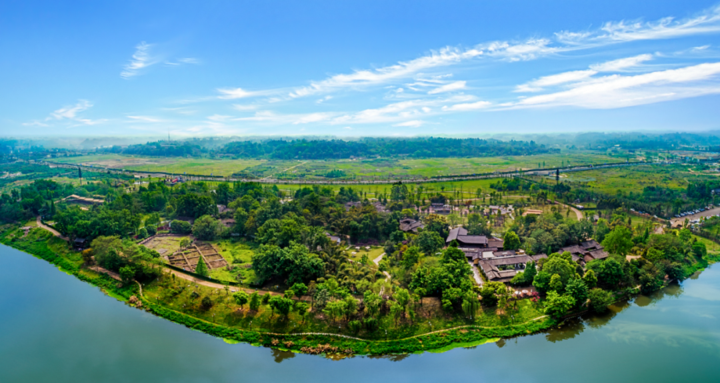
Chengdu Qiongyao Yizhi.
Additional Tips
-
Guided Tours: Consider joining a guided tour to enhance your understanding of the site’s historical context and significance. Local guides can provide enriching narratives that bring the ancient artifacts to life.
-
Nearby Attractions: After your visit, explore nearby attractions such as the picturesque bamboo forests of Western Sichuan or other cultural sites that celebrate the region’s rich history and natural beauty.
Whether you’re a history enthusiast, a ceramic art lover, or simply looking for an educational outing, the Qiongyao Ruins Museum promises an enriching experience at no cost.
How to Get There
Getting to and around Chengdu Qiongyao Yizhi (邛窑遗址) offers several convenient options for travelers. Located in Qionglai City, about 64 kilometers southwest of Chengdu, the site is easily accessible by various means of transportation.
By Car
Driving to the Qiongyao site is straightforward, with clear signage along the main routes. If you’re renting a car, take the G4201 expressway from Chengdu, which typically takes around 1.5 hours depending on traffic. The site has ample parking available, allowing you to explore at your own pace.
By Public Transport
For those opting for public transport, there are a couple of reliable options:
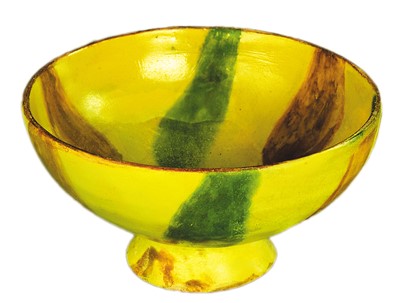
Chengdu Qiongyao Yizhi.
-
Bus: You can take a bus from Chengdu’s Xinnanmen Bus Station directly to Qionglai. Buses run frequently throughout the day, and the journey takes approximately 2 hours. Once you arrive at the Qionglai bus station, local taxis or ride-sharing services can take you to the archaeological site.
-
Train: Another option is to take a train from Chengdu to Qionglai. The train journey is scenic and comfortable, taking about 1.5 hours. From the Qionglai train station, you can hire a taxi to reach the Qiongyao ruins.
Taxis and Ride-Sharing
Taxis are readily available in Chengdu and can be an efficient way to reach the site, especially if traveling in a group. Ride-sharing apps like Didi Chuxing are also popular and provide a convenient way to book a private car for the trip.
Local Transportation
Once at the archaeological site, walking is the best way to explore the area. The site is designed for pedestrian access, allowing you to immerse yourself in the historic surroundings without the distraction of vehicles. Additionally, guided tours may offer transport options within the site if needed.
Accessibility
For visitors with mobility concerns, it is advisable to check in advance regarding the site’s facilities and accessibility options.

Chengdu Qiongyao Yizhi.
In summary, whether you choose to drive, take public transport, or use a taxi or ride-share, reaching Chengdu Qiongyao Yizhi is straightforward and offers a variety of options to suit different preferences. Enjoy your journey to this fascinating archaeological site!
Local Cuisine and Accommodation
When visiting the Chengdu Qiongyao Yizhi, also known as the Qionglai Kiln Ruins, you’ll find a delightful blend of local flavors and comfortable accommodation options to enhance your experience. Here’s a guide to some of the best places to eat and stay in the vicinity.
Culinary Delights
Traditional Sichuan Cuisine
Sichuan is famous for its bold flavors and spicy dishes, and you can find some of the best local eateries near the Qiongyao site. Consider dining at:
-
Li Jun Restaurant (利君饭店): Located just a short distance from the ruins, this restaurant serves up classic Sichuan dishes that are sure to tantalize your taste buds. Don’t miss their famous spicy hotpot, which is perfect for those who enjoy a fiery meal.
-
Wenjun Street Hotpot (文君街砂锅店): Known for its vibrant atmosphere and fresh ingredients, this hotpot spot allows you to cook your own selections right at the table. It’s a fun dining experience, especially for groups.
-
Yunnan Crossing Noodles (云南过桥米线): A unique twist on traditional noodles, this place offers a delectable variety of rice noodles served with a rich broth and an assortment of toppings. It’s a must-try for noodle lovers.
Where to Stay
Luxurious Options
If you’re looking for upscale accommodations, consider:
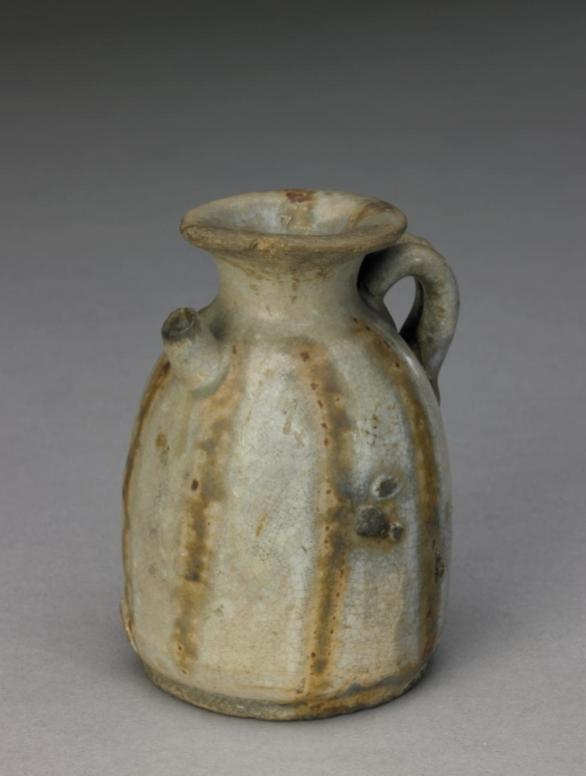
Chengdu Qiongyao Yizhi.
- Xirui Lakefront Hotel (邛崍喜瑞达·湖畔酒店): This elegant hotel offers stunning views of the surrounding landscape and is equipped with modern amenities. After a day of exploring, unwind in their spa or enjoy a meal at their on-site restaurant.
Mid-Range Choices
For those seeking comfort without breaking the bank, these mid-range hotels are ideal:
-
Wenjun Ancient Town Hotel (文君故里·景仁酒店): Nestled in a historical setting, this hotel combines modern comfort with traditional architecture. Guests can enjoy easy access to local attractions and delicious breakfast options.
-
Impression Hotel (文君故里·印象酒店): Featuring cozy rooms and friendly service, this hotel provides a great balance of comfort and value. It’s conveniently located near dining options and local shops.
Budget-Friendly Stays
Traveling on a budget? Check out:
- Tian Tai Shan Lodging (邛崃天台山苔院酒店): A simple yet comfortable option for travelers. This hotel provides essential amenities at an affordable price, making it a great base for your Qionglai adventures.
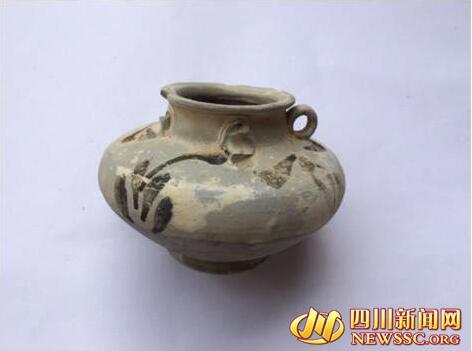
Chengdu Qiongyao Yizhi.
Local Markets and Street Food
While exploring the area around the Qiongyao site, take the opportunity to sample local street food. From spicy skewers to savory dumplings, the street vendors offer an authentic taste of Chengdu’s culinary culture.
Conclusion
Whether you’re indulging in a rich Sichuan meal or relaxing in a comfortable hotel, the Qiongyao Yizhi area provides a wonderful backdrop for both culinary and cultural exploration. Make sure to savor the local flavors and enjoy the hospitality that Chengdu has to offer!
Frequently Asked Questions
-
What is the Chengdu Qiongyao Yizhi (邛窑遗址) and why is it significant?
The Chengdu Qiongyao Yizhi, or Qiongyao Archaeological Site, is an ancient ceramic production site located in Qionglai, Chengdu. It holds historical significance as one of the largest and oldest kilns in southwestern China, dating back over 800 years. The site showcases a variety of ceramic techniques and products that contributed substantially to the evolution of Chinese pottery. -
How do I get to the Qiongyao Archaeological Site?
The site is located in Qionglai City, approximately 64 kilometers from Chengdu. Visitors can reach the site by car, taxi, or public transport. Local buses and trains frequently run from Chengdu to Qionglai, making it accessible for day trips. -
What are the opening hours of the Qiongyao Archaeological Site Museum?
The Qiongyao Archaeological Site Museum typically opens daily from 9:00 AM to 5:00 PM. However, it’s advisable to check the official site or contact the museum directly for any updates or changes to the schedule. -
Is there an admission fee to visit the museum?
Entry to the Qiongyao Archaeological Site Museum is free of charge. Visitors can explore the exhibits and learn about the history of the site without any admission fees. -
What can visitors expect to see at the Qiongyao Archaeological Site?
Visitors can explore ancient kiln ruins, artifacts, and pottery samples that demonstrate the rich history of porcelain production in the region. The site features a range of exhibits showcasing various ceramic techniques and styles, including the famous Qiongyao green and tri-colored porcelain. -
Are there guided tours available at the site?
Yes, guided tours are available for those interested in a more in-depth experience. These tours often provide valuable insights into the history and significance of the Qiongyao kilns, led by knowledgeable guides who can answer questions and enrich your visit. -
What facilities are available for visitors at the site?
The Qiongyao Archaeological Site Museum is equipped with essential facilities, including restrooms, a visitor information center, and areas for educational workshops and experiences related to ceramic making. -
Can visitors participate in pottery-making workshops?
Yes, the site offers pottery-making workshops where visitors can learn traditional techniques and create their own pieces. These hands-on experiences are an excellent way to engage with the history and craftsmanship of Qiongyao ceramics.
Final Thoughts on Your Trip
Visiting the Chengdu Qiongyao Yizhi is much more than just an exploration of ancient ceramics; it is an invitation to step back into a rich tapestry of history and culture. The site stands as a testament to the ingenuity and artistry of ancient Chinese artisans, whose work has not only shaped the landscape of ceramic production but also left an indelible mark on the cultural heritage of the region.

Chengdu Qiongyao Yizhi.
As you wander through the remnants of this ancient kiln site, the echoes of the past resonate through the lush surroundings, inviting you to ponder the lives of those who once toiled here. The exquisite artifacts on display tell stories of craftsmanship, innovation, and the unyielding spirit of creativity that transcends time.
The Chengdu Qiongyao Yizhi serves as a vibrant cultural hub today, bridging the gap between historical significance and modern artistic expression. Whether you are a history enthusiast, an art lover, or simply a curious traveler, this destination offers a unique experience that enriches your understanding of both the past and the present.
Let the beauty and legacy of Qiongyao inspire you as you continue your journey through Sichuan, reminding you that every piece of art carries with it a story waiting to be told, a connection waiting to be made. Take with you the stories of the Qiongyao, and let them enrich your travels and experiences in the days to come.

Chengdu Qiongyao Yizhi.
